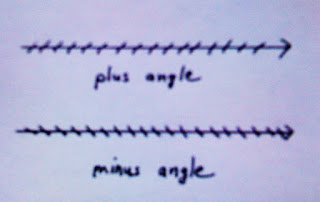I was sitting in the theater last week ready to watch my first 3D movie in the theaters, Alice in Wonderland. I looked down at my 3D glasses thinking, “Whatever happened to those red and blue glasses?” The kind you could find in a box of Captain Crunch? The glasses I was about to put on looked like geeky sunglasses. How did they work, anyway?
You might be familiar with the basics of making 3D images. It starts with how humans perceive depth.
Binocular vision
We have two eyes spaced about 5 centimeters apart to view the world at two slightly different angles. The brain processes these two perspectives and merges them into one. The brain also compares the two perspectives to calculate depth. Close your left eye and look at this WORD. Then close your right eye and look at it. The position of that word is different depending on which eye you open. The greater the difference in position, the closer the object is to you.
Stereographs
If you've played with stereographs you know how 3D images work. There are two side-by-side images, each taken from a slightly different perspective. You view the images through some kind of big goggly glasses so that your left eye only sees the left image and your right eye only sees the right image. Ta-da, the image jumps out at you!
3D Movies
Binocular vision is the idea behind filming a 3D movie. Essentially, two cameras film the same scene from slightly different angles (the two cameras are like our two eyes).
Two projectors are used to simultaenously project the film from the two camera angles onto the screen. That's why the screen looks fuzzy when you try to watch the movie without glasses.
Here is a simplified model. Let's say we are working with light polarized at “plus angle” and light polarized at “minus angle”.
A polarizing filter is placed in front of each of the two movie projectors. Each filter only lets light through that is polarized at a certain angle. Here is an example of a light source placed behind a polarizing filter:
Light from the Left Camera Projector is filtered through the “minus angle” polarizer. Light from the Right Camera Projector is filtered through the “plus angle” polarizer.
The light from the projectors reflects off the silver screen, retaining its original polarization.
Then the light reaches your 3D glasses.
Your glasses have two polarized lenses that filter the light so that your right eye only receives “plus angle” light and your left eye only receives “minus angle” light.
It's a fun trick to play on your brain. The brain starts to process what you see and the objects in the movie (like Johnny Depp) appear to pop out at you!
So what about those red and blue glasses? Back in the day, they filtered by color rather than polarized light. One camera angle would use red light, and the other angle would use blue light. The red and blue tinted glasses would filter the light – same concept, different method. The problem with this method is that you can't retain good color in the 3D image.
Even More
That's the basic idea of how 3D movies in the theater work. In actuality, the polarizing filtering is more complicated. If you like thinking about this sort of thing, Wired tries to explain circular polarization and how it helps you naturally move your head around and still watch a 3D movie. There's also a link to a pretty cool visualization of circular polarization.
And if you're wondering about 3D TV – yes, you do have to buy a whole new expensive TV specially designed to show 3D images (and Samsung, Sony, and Panasonic have models on their way). 3D TV uses different technology than 3D movies in the theater.
I'm looking forward to seeing how we will adapt to all of this 3D technology and how it will change the way we tell stories.
More info:
http://www.mindspring.com/~dmerriman/Imaxwrk.htm
http://science.howstuffworks.com/3-d-glasses.htm
http://masterimage3d.com/







Great post! I hadn't thought about how they do it now that there is no more red and blue glasses :) Thanks!
ReplyDeletei understand how the red and blue glasses work because, by the same principle, they filter out certain light waves (or frequencies) dictating which eye sees what.
ReplyDeletebut how do the cameras polarize the video without filtering out any of the colors?
Taku, is your question about the polarizing filters? I think you are asking why polarizing filters don't filter out different wavelengths of light (i.e., why they let through all colors of light).
ReplyDeleteI didn't really go into polarization, but here is a quick explanation:
Light is an electromagnetic wave - a fluctuating electric field and magnetic field. Polarization deals with the orientation of the electric field to the direction the light wave is traveling. A polarizing filter will only let through light waves with an electric field oriented in a specific direction. But those light waves can have any wavelength, which is why they don't filter out any of the colors.